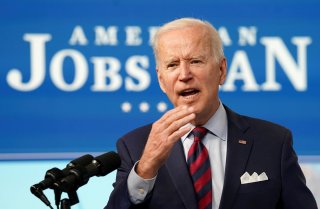Fourth Stimulus Check Really Needed? This Data Point Might Be a Clue.
What did Americans spend on with the last stimulus check?
Crucial to the idea of a “stimulus check” is the idea of the “stimulus.” The main purpose in handing out money, as the United States has done three times during the pandemic began in March 2020, is to stimulate a sluggish economy, ensuring that cash continues changing hands. If people simply deposit their stimulus checks in the bank and do not spend them, the purpose of the measure is defeated.
Therefore, when the government began to mail stimulus payments in March 2020, the U.S. Census Bureau began to gather data on their usage, trying to determine how much of each check was spent on goods and how much was saved. In this regard, reports from early in the pandemic were encouraging; they suggested that most Americans had spent the first $1200 on immediate expenses for basic needs, such as food, rent, and basic goods.
A report by online lending marketplace LendingTree, based on U.S. Census Bureau data around the usage of the most recent stimulus check, suggests that Americans’ priorities have changed. Per its most recent estimates, only one-fifth of Americans spent the March 2021 stimulus check on basic necessities; fully half used it instead to pay down existing debts, an increase of 34% from 2020.
Is this good or bad?
LendingTree suggests that the changing pattern reflects optimism. The rush to buy badly needed immediate goods – stocks of food, for instance, or toilet paper – may have been a reaction to fear, as Americans were unsure of the future and prioritized their basic necessities over long-term strategic purchases. A year into the pandemic, most Americans have become accustomed to it, and less likely to make emergency purchases.
The report broke down Americans’ priorities among racial and economic lines. It found that, among those making less than $25,000 per year, only 26% spent the money on debts, while more than half spent it on basic needs; among those making $200,000 per year or more, these numbers were reversed. And while 61% of black respondents intended to the money towards paying debts, only 45% of white respondents did.
Matt Schulz, LendingTree’s chief credit analyst, noted that payment of debts was usually not prioritized during economic downturns, due to the pressing need for other considerations. However, LendingTree encouraged the pattern. Schulz was quoted as saying, “Repeated stimulus and reduced spending means people have more cash in their pockets, and that — combined with the hope spurred by widespread vaccinations — has given them the luxury of paying down debts instead of solely squirreling away cash." He struck a note of optimism: “Many, many Americans have been financially devastated and may never quite recover, but a surprising number of Americans will emerge from the pandemic in far better financial shape that most anyone would’ve predicted.”
Trevor Filseth is a current affairs writer for the National Interest.

